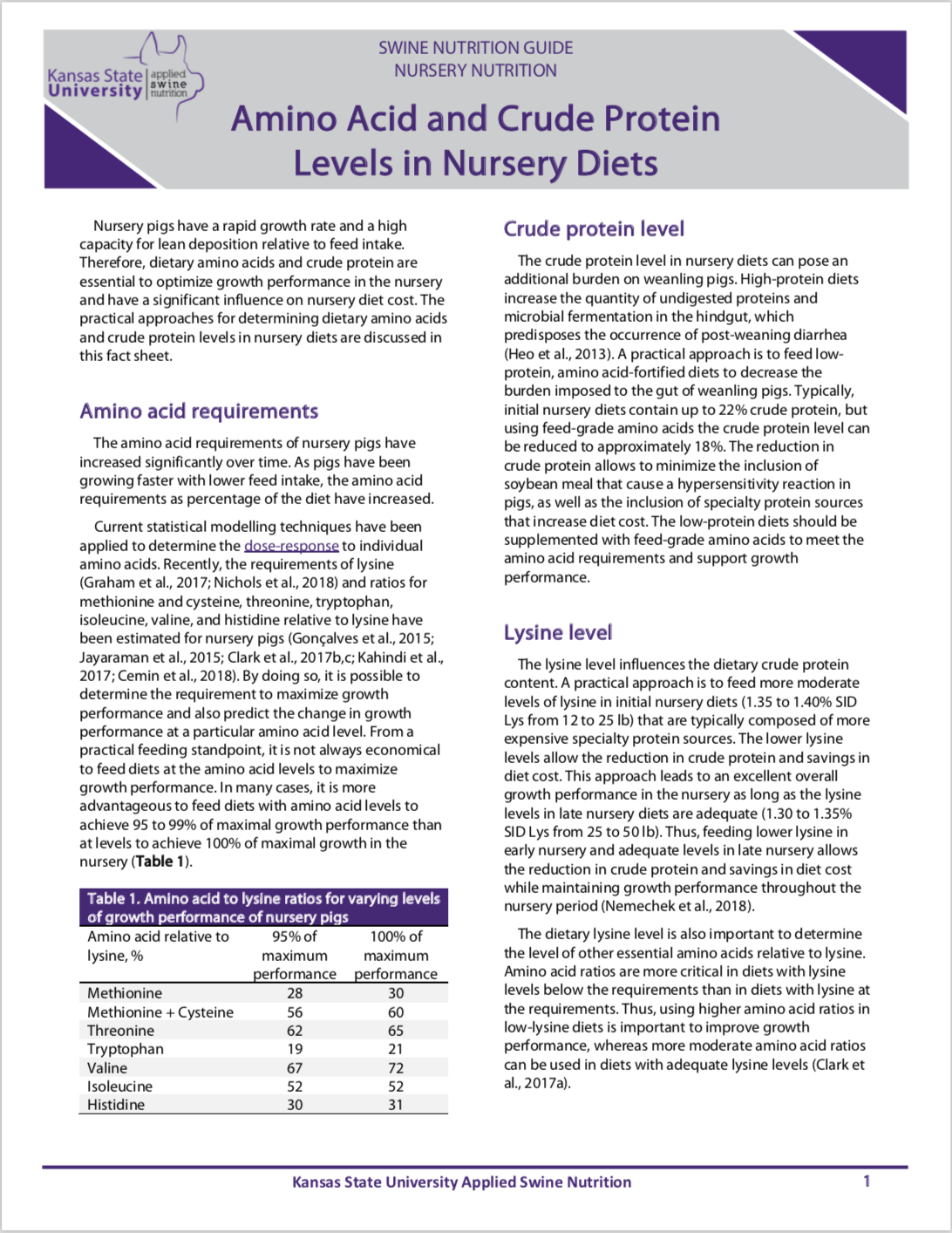Lysine level in nursery diets
The lysine level influences the dietary crude protein content. A practical approach is to feed more moderate levels of lysine in initial nursery diets (1.35 to 1.40% SID Lys from 12 to 25 lb) that are typically composed of more expensive specialty protein sources. The lower lysine levels allow the reduction in crude protein and savings in diet cost. This approach leads to an excellent overall growth performance in the nursery as long as the lysine levels in late nursery diets are adequate (1.30 to 1.35% SID Lys from 25 to 50 lb). Thus, feeding lower lysine in early nursery and adequate levels in late nursery allows the reduction in crude protein and savings in diet cost while maintaining growth performance throughout the nursery period (Nemechek et al., 2018).
The dietary lysine level is also important to determine the level of other essential amino acids relative to lysine. Amino acid ratios are more critical in diets with lysine levels below the requirements than in diets with lysine at the requirements. Thus, using higher amino acid ratios in low-lysine diets is important to improve growth performance, whereas more moderate amino acid ratios can be used in diets with adequate lysine levels (Clark et al., 2017a).
